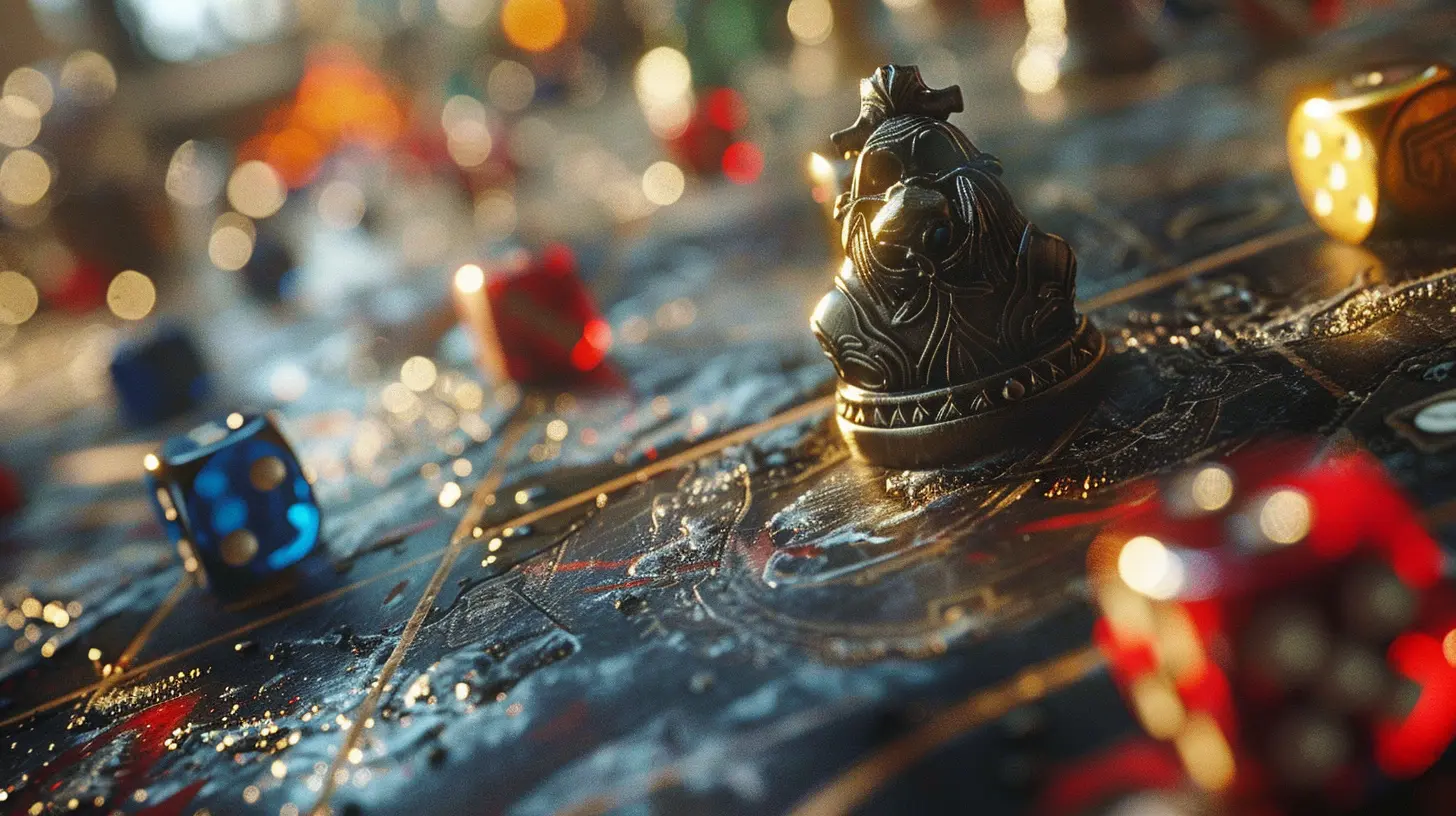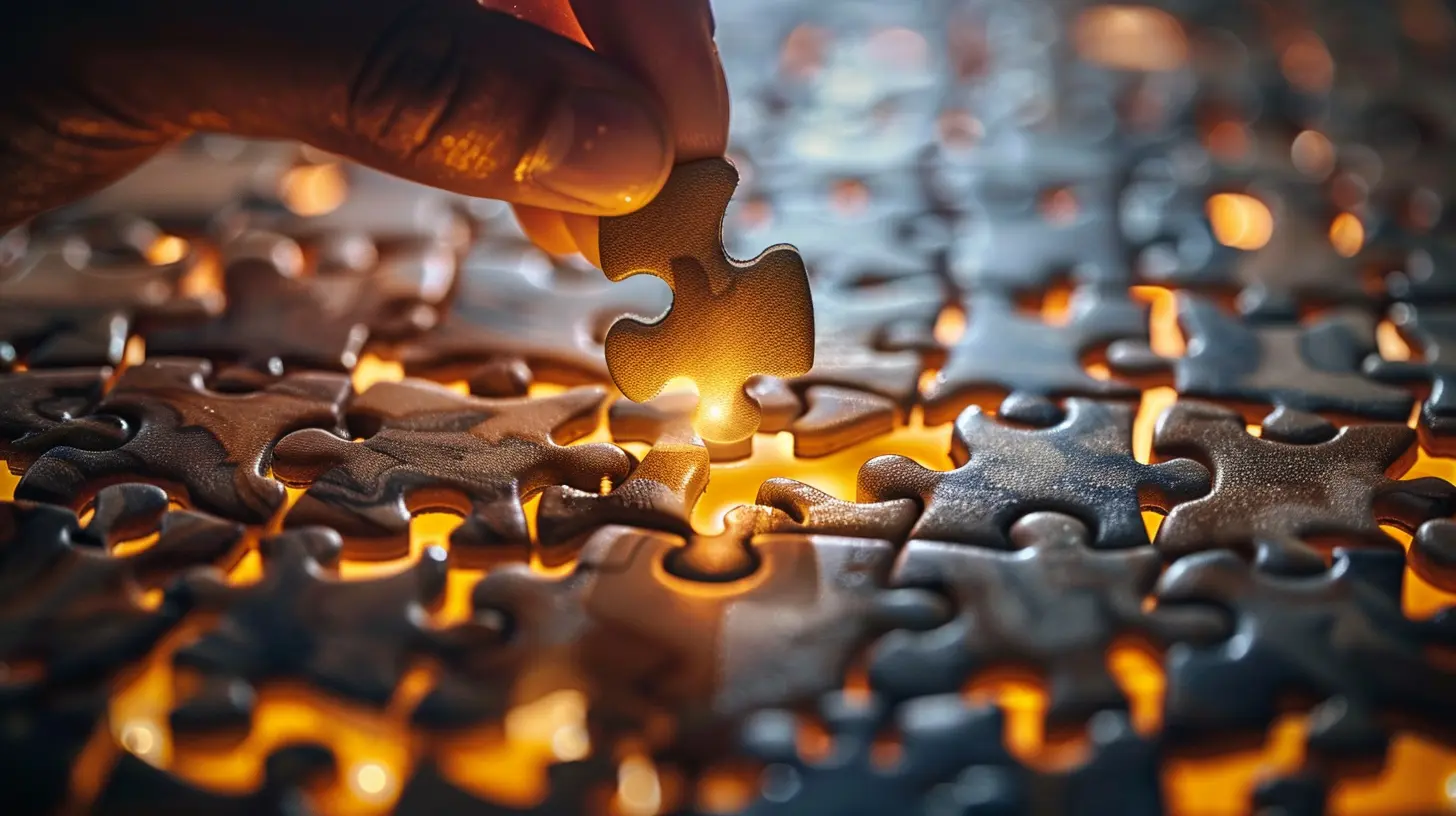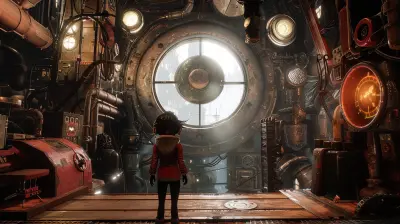How Game Mechanics Reinforce Problem-Solving Abilities
4 October 2025
Ever been stuck on a game level with no clue how to move forward, only to finally experience that glorious "aha!" moment? That satisfying click when everything suddenly makes sense? Yeah, we've all been there. Whether you're sneaking through an enemy base in Metal Gear Solid or trying to get those pesky portals in Portal to line up just right, you're actually doing a lot more than just playing a game – you're problem-solving.
Sounds like something out of a self-help book, right? But hear me out. Games aren't just digital playgrounds; they’re cleverly designed challenge factories. Behind the flashy graphics, epic soundtracks, and intense boss fights, there’s a very real system of mental gymnastics going on. And the beauty of it all? It’s fun.
Let's dive deep into how game mechanics – the building blocks of gameplay – actually flex your brain and make you a better problem solver without you even realizing it.
What Are Game Mechanics, Anyway?
Before we get ahead of ourselves, let’s clear up what “game mechanics” even are. Think of them as the rules and systems that make a game tick. They’re the gears turning behind every jump, every puzzle, every combo move.Some common game mechanics include:
- Resource management (like keeping track of ammo and health)
- Turn-based strategy (think XCOM or Final Fantasy Tactics)
- Physics-based challenges (hello, Angry Birds)
- Puzzle-solving (Tetris, The Witness)
- Stealth mechanics (Assassin’s Creed, Hitman)
- Time management (Overcooked, anyone?)
Each of these mechanics serves as a mini-challenge for your brain. But together? They create real-deal problem-solving environments.
Gaming: The Ultimate Problem-Solving Simulator
Let’s break it down. You boot up a game. You’re dropped into a world with a goal (rescue the princess, defeat the alien invasion, find the lost artifact, etc.). But getting to that goal isn’t straightforward. You’ve got obstacles, enemies, puzzles, and limited resources. What do you do?You analyze. You test. Sometimes you fail miserably. Then you try again—smarter this time.
Sound familiar? Yup, that’s classic problem-solving behavior.
Trial and Error: The Hidden Gold Mine of Learning
Games are incredible at teaching through failure. Unlike real life, where failure can be expensive or embarrassing, games encourage it. Why? Because they’re built on trial and error.Take Dark Souls, for example. It’s notoriously brutal. But each time you die, you learn something new—enemy patterns, better timing, smarter positioning. It feels punishing, sure, but it’s actually training your brain to observe, adapt, and overcome.
Games reward persistence. They turn mistakes into stepping stones. That’s the kind of mindset that doesn’t just help you beat a level—it helps you tackle problems in the real world too.
Pattern Recognition and Critical Thinking
Ever noticed how good players can predict enemy behavior in games like Call of Duty or Street Fighter? That’s not magic. That’s pattern recognition—a key skill in problem-solving.Games train you to spot visual cues, anticipate movements, and make snap decisions. This is especially true in puzzle games like Sudoku, Picross, or platformers like Celeste, where timing and sequence are everything.
When you’re constantly solving in-game problems, your brain starts building these connections faster, getting sharper over time. You start seeing patterns not just in the game, but in work, school, and everyday life.
Strategy and Decision-Making: A Mental Chess Match
Whether you’re commanding armies in Civilization or building your economy in SimCity, strategy games push your brain into high gear. You’ve got to plan ahead, think through consequences, allocate resources, and outsmart your opponent.This balance of long-term planning and in-the-moment decisions sharpens executive function. It’s like giving your brain a workout without stepping into a gym.
And the stakes? Just high enough to make your decisions matter, but low enough to keep things fun. That sweet spot is where real problem-solving growth happens.
Games That Nail Problem-Solving Mechanics
Alright, let’s roll out some real examples. These games don’t just offer great gameplay—they’re masterclasses in teaching you how to solve problems:1. _Portal & Portal 2_
If you haven’t played these yet, do yourself a favor. Portal is basically Physics 101 meets comedy. You solve puzzles using—you guessed it—portals. These tests force you to think in three dimensions and reconsider basic cause and effect.2. _The Legend of Zelda: Breath of the Wild_
From temperature management to crafting food and solving shrines, this open-world masterpiece gently nudges you to experiment, explore, and adapt creatively.3. _Kerbal Space Program_
Want to learn rocket science without the pesky math degree? This game lets you build rockets and figure out why they exploded five seconds after launch. Trial. Error. Progress. Boom.4. _The Witness_
A beautifully designed island full of interconnected puzzles that test spatial reasoning, logic, and sometimes your patience.5. _Tetris_
Simple? Yes. Easy? Not if you’re playing at high speed. Tetris forces you to think ahead, recognize patterns, and react fast. It’s a timeless brain-flexer.Multiplayer Games: Teamwork Makes the Dream Work
Let’s not forget online multiplayer games. Games like Overwatch, Fortnite, or League of Legends don’t just require individual skill—they demand communication, coordination, and quick problem-solving under pressure.Team strategy, fast decision-making, adapting to enemy tactics—this is social and cognitive problem-solving on steroids. And it's all happening with total strangers. Wild, right?
How Game Mechanics Build Real-World Skills
Okay, so maybe you’re not going to become a rocket scientist just from gaming. But the skills you build through gameplay are very real:- Analytical Thinking – figuring out game rules, logic systems, and mechanics translates well into business and academic fields.
- Creative Solutions – many games allow multiple paths to victory. This teaches flexible thinking.
- Resilience – dying 50 times in a row builds grit.
- Focus and Attention – games require constant awareness, time management, and decision-making.
- Working Memory – remembering patterns, enemy behaviors, or mission objectives tests and grows short-term memory.
And did we mention it’s all fun while you’re doing it?
The Magic of Instant Feedback Loops
Another reason games are epic at teaching problem-solving? One word: feedback.You hit a switch—the door opens. You run into a wall—ouch, now you know not to go there. You press the wrong button—the game lets you know immediately.
This instant feedback loop is crucial to learning. It helps you adjust your approach without delay. Compare this to real life, where feedback can take days, weeks, or never come at all. In games, every action has a reaction, and every move teaches you something.
Gamification of Real Life
The influence of game mechanics has bled into real life too. Apps like Duolingo, Fitbit, and Notion use game-like systems—badges, progress bars, streaks—to make everyday tasks more engaging. Why? Because these mechanics work.They tap into the same problem-solving drive that games do. Keeping us motivated, focused, and improving bit by bit.
But Wait… Are All Games Created Equal?
Not really. Some games are basically digital potato chips. Fun? Definitely. Nutritious for your brain? Eh, not so much.Games that reinforce problem-solving tend to have the following traits:
- They present clear goals.
- They offer challenging yet fair obstacles.
- They provide feedback that helps players improve.
- And they encourage experimentation.
So next time you're choosing between mindless button-mashing and a game that makes you think, maybe pick the one that gives your brain a little workout too. Balance it out like a solid diet—you need both fun and function.
Final Thoughts: Why This Matters More Than Ever
We live in a world overwhelmed by data, distractions, and daily dilemmas. Being good at problem-solving isn’t just a nice-to-have anymore; it’s essential. And what better way to flex those mental muscles than by doing something you actually enjoy?Whether you’re figuring out how to power a city in Cities: Skylines or solving ancient riddles in Tomb Raider, gaming is helping your brain grow in ways schools and workplaces rarely do.
Game mechanics are more than just gameplay elements. They’re blueprints for thinking. And when we let them guide us, we become more creative, more resilient, and yes—better problem solvers.
So next time someone says gaming’s a waste of time, hit pause and hit 'em with the facts. You're not just playing—you're leveling up your mind.
all images in this post were generated using AI tools
Category:
Educational Value Of GamesAuthor:

Leif Coleman
Discussion
rate this article
1 comments
Octavia McMurtry
Who knew dodging flying turtles and crafting potions would make me a genius? Next time I fix my Wi-Fi, I’m calling it a ‘stealth mission’—thanks, game mechanics!
October 9, 2025 at 3:13 AM

Leif Coleman
Game mechanics often turn complex challenges into engaging experiences, enhancing our problem-solving skills in creative ways. Your ‘stealth mission’ analogy perfectly captures how gaming teaches us to tackle real-life issues!


